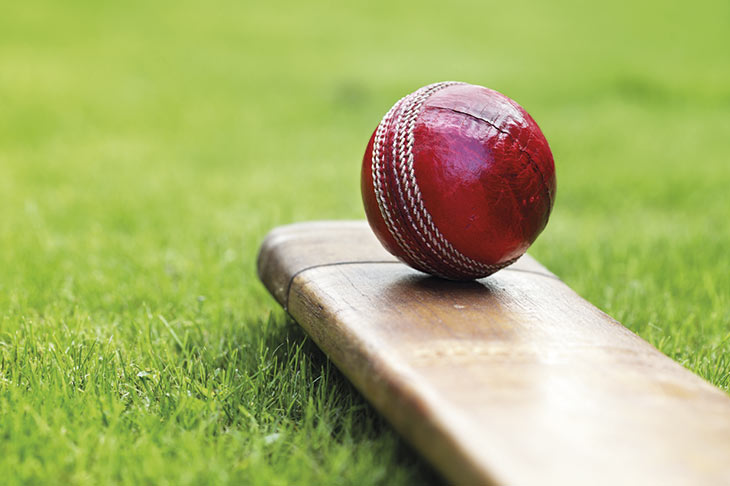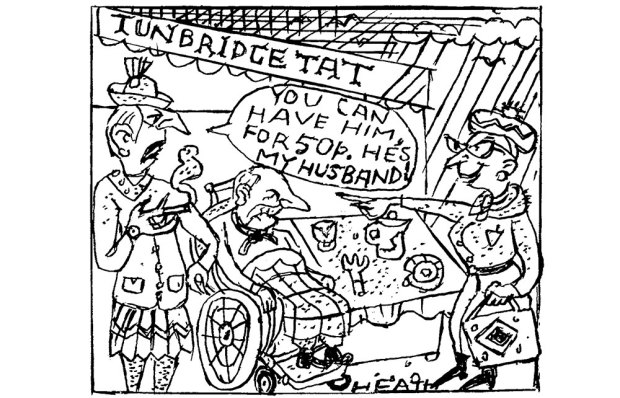The Prime Minister recently blamed the delay in the resumption of amateur cricket on the ball itself, calling it ‘a vector of disease’. Happily, tests have disproved this. Balls contaminated with Covid-19 showed no trace of it 30 seconds later — and recreational cricketers will be allowed to return to the field from this weekend.
Much of the complexity of cricket comes from the interplay between wood, turf and the leather of the ball. Bats have changed greatly over the centuries, from curved to straight, from thick to thin and back to thick again, but the ball has remained much the same. A core of rubber and cork wrapped tightly with string, then encased in leather, stitched in a way to create a prominent seam running around the ball.
When the gentlemen gamblers took over cricket in the 18th century and bet vast sums on the outcome of matches, it became imperative that the balls be standardised. A bootmaker, Duke & Sons, diversified into making balls, won a royal warrant on the way and, 250 years later, produces the balls which are used in the current Test series.
But even if you won’t catch Covid from a cricket ball, there are many other reasons to be afraid of it. Frederick, Prince of Wales was thought to have died as the result of being struck by one in 1751. Since then a number of players and umpires have incurred serious injury in this way, most recently and tragically in November 2014 when the Australian Test batsman Phillip Hughes collapsed and died after being hit on the side of the neck by a short delivery.
This element of danger has always been there in cricket. In the early 18th century the professional cricketer George Brown bowled right-arm fast, underarm, supposedly once killing a passing dog with one delivery. In the most memorable series ever, known as Body-line, Douglas Jardine sought to nullify Don Bradman with fast short-pitched bowling aimed at the body. The West Indies team of the 1980s captivated audiences with their brand of cricket, which was built around extreme pace and hostility. I once played against a bowler who’d been unable to force his way into that side. John ‘the Dentist’ Maynard had earned his nickname from removing batsmen’s teeth.
The successors to that West Indies team, with the ball at least, were the Pakistani pair Wasim Akram and Waqar Younis. They devastated batting line-ups with their swing and control. How did they make the ball deviate at the last minute past the bat, and crash into the stumps? The condition of the ball changes during the match. The leather loses its lacquer and players work furiously to shine one side and let the other deteriorate. Many bowlers can swing a new ball, but relatively few have mastered the sorcery needed for ‘reverse swing’ with the old one.
Accusations of ball tampering are as old as the game itself. The laws of cricket permit the application of sweat and saliva to shine the ball and help it swing. Players have resorted to using their nails, teeth, bottle tops and sandpaper. The amateurs taking the field this weekend will not be allowed to use saliva. But they have other options. Different brands of hand sanitiser for each side of the ball should get it reversing in no time.
Got something to add? Join the discussion and comment below.
Get 10 issues for just $10
Subscribe to The Spectator Australia today for the next 10 magazine issues, plus full online access, for just $10.
You might disagree with half of it, but you’ll enjoy reading all of it. Try your first month for free, then just $2 a week for the remainder of your first year.














Comments
Don't miss out
Join the conversation with other Spectator Australia readers. Subscribe to leave a comment.
SUBSCRIBEAlready a subscriber? Log in